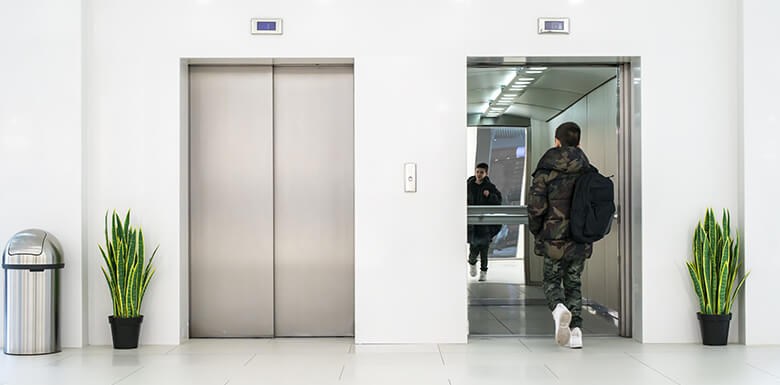February 2, 2023
Common Causes of Elevator Accidents
By Jonathan Damashek
Posted in

Hurt in an Elevator Accident? Our Injury Attorneys Can Help
If you have been injured in an elevator accident in New York, our law firm can help. Our elevator accident attorneys have experience handling elevator injuries, including a recent $2.3 million settlement for an elevator accident. Call (212) 279-6742 today to schedule a free initial consultation. Our law firm also works on a contingency fee basis, so you don’t pay unless we win your case.
Elevator Accidents in NYC
You probably don’t think twice when you get into an elevator. Like all large cities, New York City wouldn’t exist as we know it without elevators. There are hundreds of thousands of elevators, escalators, and related equipment in New York City, according to the city’s Department of Buildings.
But these powerful machines come with dangers if not properly looked after.
In the United States, more than 17,000 injuries occur every year in elevator accidents. Below are some of the most common causes of elevator accidents to help you avoid them.
1. Mis-leveling
Mis-leveling is a common cause of elevator accident injuries. Mis-leveling happens when an elevator fails to stop at the floor’s level. There may be a problem with the brake linings, springs, or drum. The elevator could also be overloaded, or the electrical voltage could fluctuate.
Mis-leveling leaves a dangerous and unexpected space between the elevator car and the floor. This is hazardous, especially for the elderly and children. It may result in a slip, trip, and fall accident.
2. Excessive Speed
Excessive speed causes injuries by passengers falling to the floor, crashing into walls, or bumping into each other. Elevators should be maintained regularly and inspected to ensure their speed is appropriate.
3. Door Strikes
Passengers can be struck and injured by a closing, sliding door. There could be broken door protection devices (electric eyes, safety edges, and detector edges).
The closing force or speed may not be properly adjusted, or the door protection device doesn’t react quickly enough to avoid passenger contact.
4. Lack of Proper Maintenance and Safety Inspections
Elevators and escalators in the five boroughs must be inspected twice annually in compliance with New York City building codes. If an elevator is not routinely checked and necessary repairs are not done, it can malfunction. This may result in serious injuries or fatalities. Look for a certificate of inspection on the inside of the elevator to make sure the elevator has been adequately checked.
5. Defective Doors
Modern elevators typically have built-in door sensors that cause them to open and close slowly to prevent injuries. However, door sensors can malfunction and fail to detect a person or limb. The doors close suddenly, trapping a victim in the door or crushing a body part. This is especially dangerous if the elevator begins to move
6. Falling Down Elevator Shafts
When elevators are stuck at the bottom or the top, this can cause an open elevator shaft. Falling into a shaft is among the deadliest type of elevator accidents. Riders may not notice that the elevator’s interior is missing, step in, and fall into the hole.
Someone could fall down an elevator shaft because the outer door’s locking system doesn’t work, exit a stalled elevator more than three feet above a floor, remove people from a stalled elevator improperly, or “elevator surf.”
7. Abrupt Stops
If an elevator abruptly stops, passengers might be thrown into walls, the floor, and into each other. This could cause serious spine, ankle, and knee injuries.
The speed controls might malfunction, or the elevator could be misinformed about where it is in the shaft. Additionally, the car’s emergency systems might fail to stop it safely. The car could also collide with its counterweight, and bolts and hardware can be sheared off, causing the car to lose control. With proper maintenance and design, abrupt stops—and subsequent injuries—could be avoided.
8. Other Possible Elevator Accidents
Other accidents usually involve faulty sliding doors and other malfunctioning features. This can result in being electrocuted by a malfunctioning elevator, suffering a limb amputation, decapitation, or crushing injuries.
Call Hecht, Kleeger & Damashek After an Elevator Accident
Elevator accidents are unexpected. You should not have to pay for someone’s careless action that caused your injuries. An elevator accident lawyer with Hecht, Kleeger & Damashek, P.C. can help you recover money damages for medical bills, lost pay, and other losses.
You owe us nothing unless you win compensation. Call today at (212) 279-6742 or use our online contact form for a free, no-obligation consultation.
